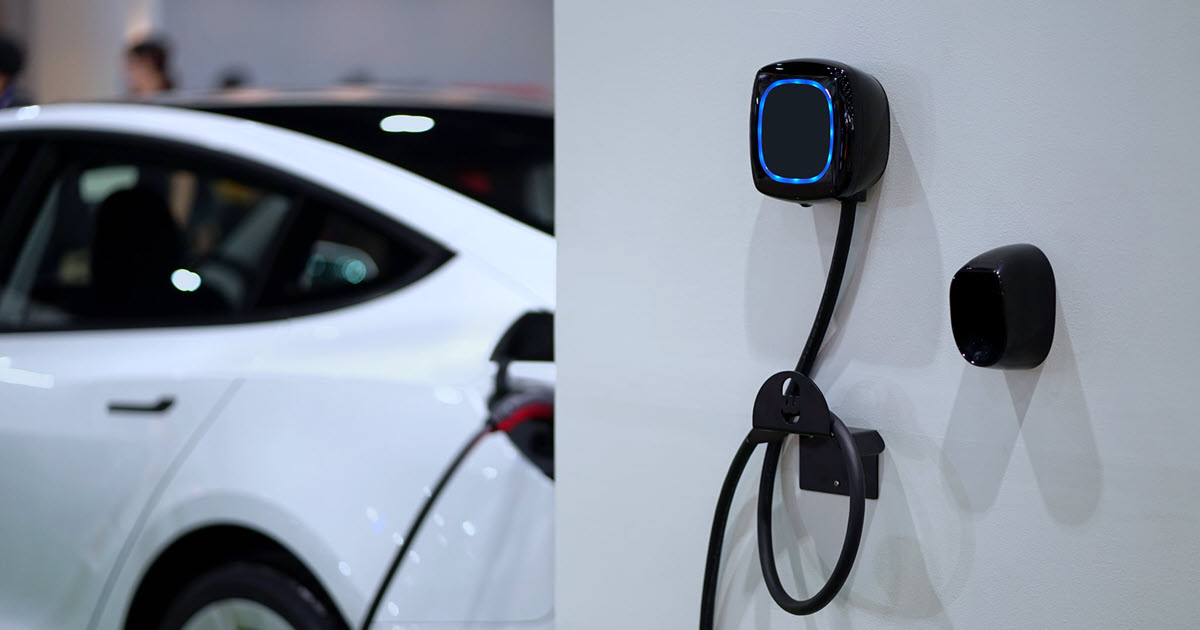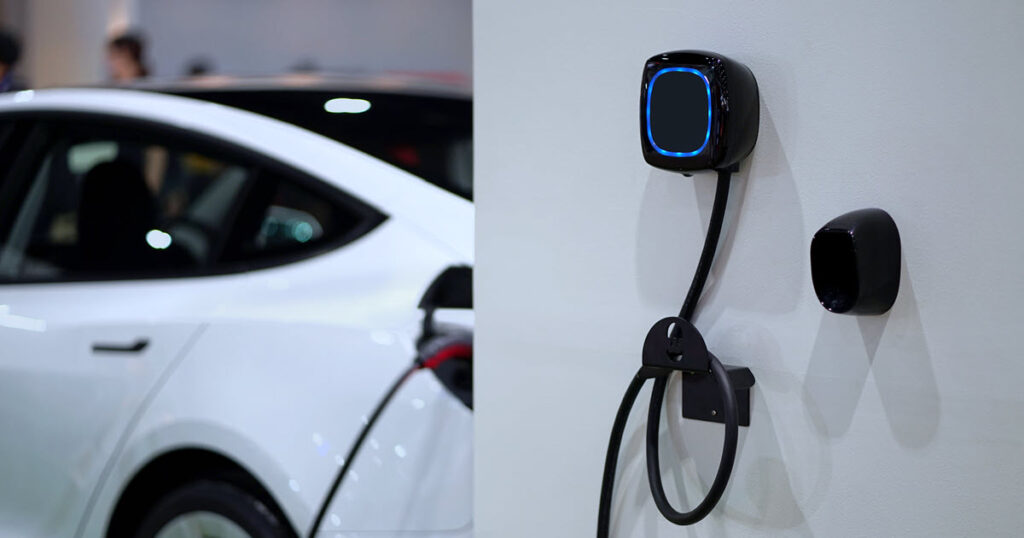EV Charger Installation in California, the sun-drenched leader in electric vehicle (EV) adoption, beckons environmentally conscious drivers with the promise of clean, efficient transportation. But for many new EV owners, the question arises: how do I install a home charger efficiently and navigate the potential roadblocks? Fear not, Californians! This comprehensive guide equips you with the knowledge to transform your garage into a charging oasis, avoiding common pitfalls and maximizing your EV experience.
Powering Up: Charting Your Electrical Course
Before diving into chargers and cables, embarking on a successful home EV charger installation requires a deep dive into your home’s electrical infrastructure. Think of it as understanding the terrain before charting your course. Here’s your essential roadmap:
Power Play: Assess your electrical panel’s capacity. Can it handle the chosen charger’s power demands? Upgrading might be necessary for high-powered options. Consult a qualified electrician for a professional evaluation. Remember, overloading circuits is a recipe for safety hazards and equipment damage.
Circuit Check: Most Level 2 chargers, the sweet spot for home use, require dedicated 240-volt circuits. Ensure proper grounding and safety measures are implemented by a licensed electrician. Think of it as building a sturdy foundation for your charging system.
Location: Where will your EV bask in the glow of charging bliss? Choose an accessible spot near your electrical panel within cable reach (typically 18-25 feet). Consider future needs – will you have another EV joining the party? Planning ahead prevents future charging woes.
Bonus Tip: Contact your local utility provider. They might offer incentives or rebates for upgrading your panel or installing a charger, sweetening the deal and putting more green in your wallet (besides the kind powering your EV).
Choosing Your Champion: Navigating the Charger Maze
With a dizzying array of charger options vying for your attention, selecting the right one can feel like navigating a labyrinth. But fret not! By considering these key factors, you’ll find your perfect charging champion:
Level Up: Level 2 chargers are your ideal home companions, offering significantly faster charging than standard outlets. Level 3 chargers boast even quicker speeds, but be prepared for higher costs and installation complexity. Choose wisely based on your charging needs and budget.
Smart & Savvy: Do you crave the convenience of smart scheduling, app control, or integration with home energy management systems? These features offer not only ease of use but also potential cost savings through optimized charging. Consider your tech-savvy desires.
Brand & Trust: Opt for reputable brands with strong warranties to ensure quality and reliable operation. Imagine your charger as a loyal companion on your electric journey – choose one you can trust for miles to come.
Pro Tip: Utilize online resources and expert consultations like Nabu Energy to compare charger features, specifications, and compatibility with your specific EV model. Remember, the right charger should complement your EV like a perfectly matched set of wheels.
Permit Power: Hurdles and How to Cross Them
Installing an EV charger often requires permits, but don’t let that deter you! Think of them as necessary checkpoints on your charging adventure. Here’s how to navigate the permitting process smoothly:
Local Knowledge is Key: Contact your local building department or HOA to understand specific permit needs and application procedures. Different regions have different rules, so do your research to avoid unnecessary delays.
Documentation Dojo: Prepare the necessary documents like electrical plans, charger specifications, and site diagrams. Think of them as your permit passport, granting you access to charging nirvana.
Seek the Experts: Consider partnering with a qualified expert like Nabu Energy familiar with permit processes for a smoother experience. They can guide you through the paperwork maze and ensure everything is in order.
Remember: Permitting timelines can vary. Plan ahead and factor in potential delays to avoid stalling your charging aspirations.
Financial Fitness: Budgeting for Your Charging Oasis
The cost of installing a home EV charger Installation can vary depending on several factors, but don’t worry, we’ll break it down:
Charger Cost: Level 2 chargers typically range from $200 to $1,000, with smart features adding to the price tag. Imagine it as the initial investment in your charging haven.
Installation Cost: Electrical work can range from $500 to $2,000, depending on complexity and required upgrades. Think of it as the groundwork for your charging ecosystem.
Permits & Inspections: Fees can vary by location, typically ranging from $50 to $200. Consider them as administrative tolls on your charging journey.
Maintaining Your Charging Champion: A Guide to Longevity
Just like any reliable companion, your EV charger requires regular care to function optimally. Here are key maintenance tips:
Keep it Clean: Regularly wipe down your charger with a damp cloth to remove dust and debris. Think of it as giving your charger a spa day to keep it looking and performing its best.
Inspect Cables: Regularly check for signs of wear, damage, or loose connections in the charging cable. Imagine the cable as the bridge between your car and the charger; keep it in good shape for smooth energy flow.
Software Updates: Some chargers offer software updates for improved performance and security. Stay updated for optimal charging efficiency and peace of mind. Think of it as giving your charger a digital tune-up.
Professional Check-Ups: Schedule periodic inspections by a qualified electrician to ensure everything is functioning safely and efficiently. Consider it as preventative maintenance for a long and healthy charging life.
Charging for a Greener Future: The Environmental Impact
By choosing an electric vehicle and installing a home charger, you’re not just making a convenient choice – you’re contributing to a cleaner planet. Here’s how:
Reduced Emissions: EVs produce significantly fewer greenhouse gases and air pollutants compared to gasoline-powered vehicles. Imagine cleaner air and a healthier environment with every charge.
Renewable Energy Integration: Pairing your home charger with solar panels creates a self-reliant charging system, further reducing your carbon footprint. Think of it as powering your EV directly from the sun – a sustainable and eco-friendly choice.
Energy Efficiency: Level 2 chargers optimize energy transfer, minimizing charging losses and maximizing efficiency. Imagine getting the most out of every electron, reducing your overall energy consumption.
California’s EV Support System: Resources and Beyond
California stands firmly behind its EV-conscious residents, offering valuable resources and support. Here are some helpful platforms:
California Air Resources Board (CARB): Provides comprehensive information on EV incentives, rebates, and charging infrastructure development. Think of it as your one-stop shop for all things EV-related in California.
Clean Vehicle Rebate Project (CVRP): Offers generous rebates for purchasing or leasing new EVs and installing home chargers. Imagine it as a financial boost to sweeten your transition to electric driving.
Charge Ready X: Assists Californians with planning, permitting, and installing home chargers. Think of it as your expert guide navigating the charging installation process.
Local Utility Providers: Many utilities offer rebates and programs specifically for home EV charger installation. Contact your local provider to discover their offerings. Imagine it as partnering with your utility for a smoother and more affordable charging experience.
The Road Ahead: Embracing the EV Charge
Installing a home EV charger (EV Charger Installation) is an investment in your convenience, your wallet, and the environment. By understanding the process, navigating potential challenges, and taking advantage of available resources, you can transform your garage into a personalized charging oasis. So, embrace the charge, California! With informed planning and the right guidance, you’ll be cruising towards a cleaner, more sustainable future, one mile at a time.

